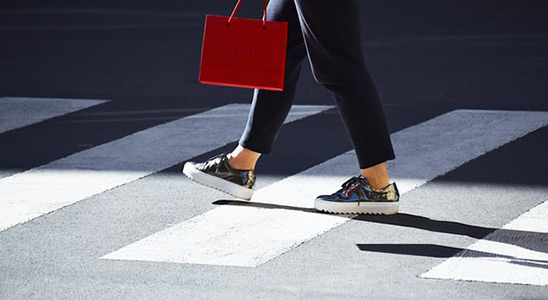Ever buy more than you intended at a store, just because something you walked by caught your eye? Just like items in the checkout lane are easily added to an order, the way that your retail store is organised can play a key role in how much time customers spend in your store — and how much money. Here are the five keys to store organisation that small business owners can capitalise on.
Almost all customers will walk by the display that’s to the right of the door.
Customers tend to shop counter-clockwise in a circle around the store, says Profit First author Mike Michalowicz. That makes the display that’s to the right of the entrance a valuable spot. Place your high value products and displays here, Michalowicz suggests. Positioning your best display here will encourage more of your customers to walk by.
What do most people come to your store for? Place it far from the door.
The more time that customers spend in the store, and the more items they walk by, the more money they are likely to spend. Grocery stores place their frequently bought items — milk and eggs — in the back of the store because then customers will walk by several displays to get there. Identify what customers are most often coming to your store for, and strategically place those items so that customers walk through more of your store.
Eye-level shelf space is prime real estate.
Customers are most likely to see items that are at eye-level. Of course, not all items can be placed there, but that information can help you choose which shelf to place what product on. High value items can go at that eye-level shelf, while related items that aren’t quite as valuable can go on the top and bottom shelves. Keep in mind, too, that the definition of eye-level varies based on the height of your customers. Products geared towards kids should be lower on the shelves.
Maximise the space that you have.
Small businesses don’t often have the resources to create giant retail spaces — and that’s okay. Work to create a space that’s inviting, rather than vast. Find a balance between creating a store that feels cluttered, and creating a store that feels empty.
Keep products easy to find.
While strategising where to place your products in the store, don’t let retail strategy override the obvious — products should be easy to find. Keep related products near each other, and organise in a logical way by product category. Yes, you should keep customers moving through as much of the store as possible, but don’t allow them to leave frustrated because they couldn’t easily find what they were looking for. Be sure to use extra signage after rearranging for returning customers who may be thrown off by the new arrangement.
Using strategy when organising your store can help customers stay longer and even grab more items off the shelf — just make sure that your organisation scheme will also make sense to anyone looking for an exact product.
